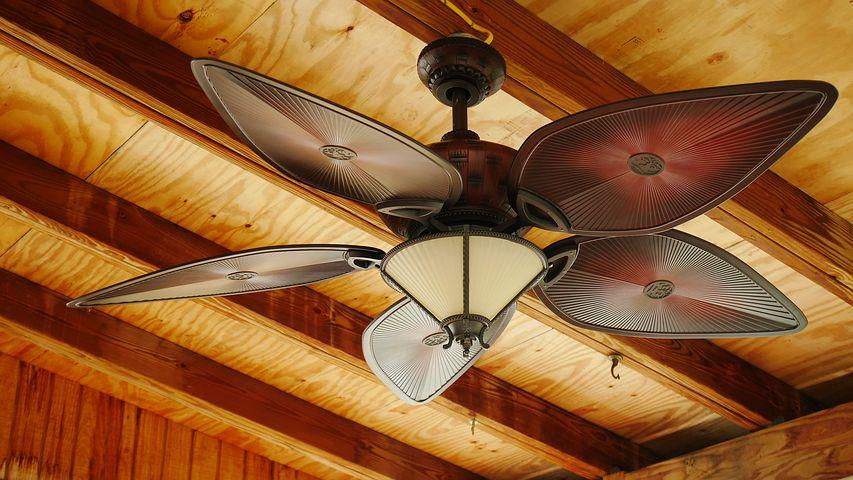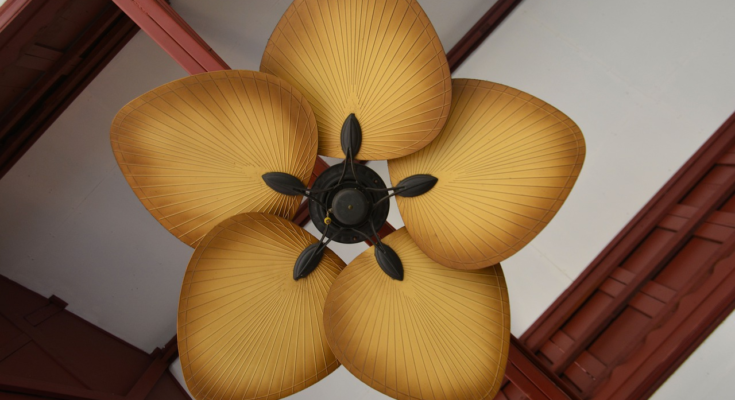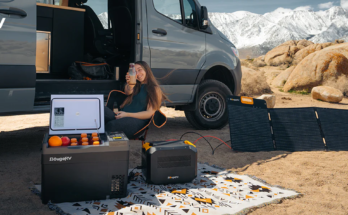A ceiling fan can be a great upgrade to a home. It can keep you warmer in the winter and cooler in the summer while cutting your energy costs year-round. And if you don’t already have ceiling fans, they’re pretty easy to install. Here’s what you need to do.
Make Sure the Circuit Is Safe
Wiring up ceiling fans, with or without lights, is pretty straightforward, but it still requires you to work with your home’s wiring. Before you touch the wires, turn off the circuit for the room at the breaker box. Use a voltage tester to make sure there’s no voltage running through the room’s wiring.
Nix the Light Fixture
It’s pretty easy to replace a light fixture with a ceiling fan, and if you buy a ceiling fan with a light fixture built in, you don’t even have to worry about how you’re going to replace the lighting in the area. You can shop online for a wide range of ceiling fans with lights, in all kinds of styles.
To start the process, take the glass cover off of your light fixture and unscrew all the lightbulbs. You should be able to see screws in the base of the fixture. Unscrew these to disconnect the light fixture from the ceiling. Lower it carefully until the wiring connections are exposed. Remove the wire nuts and untwist the wiring connections.
Prep the Ceiling
A ceiling fan is a lot heavier than a light fixture, so you can’t just hang it from the same junction box. You need a fan-rated electrical box and it needs to be secured to either a ceiling joist or a fan brace. If your light fixture was located directly under a joist and the electrical junction box is secured to that joist, make sure it’s rated to hold a fan’s weight and then you should be good to go.
If your light fixture was not anchored to a joist, you will have to install a fan brace to support the weight of your fan. You can buy expanding metal fan braces that you can simply slip through the hole in your ceiling. As you expand them, spikes on either end bite into the joists on either side of your ceiling hole, holding the brace firmly in position. You can also secure a piece of a two-by-four plank between the joists above your ceiling hole.
Once you have installed your fan brace, don’t forget to secure a fan rated electrical box to it. Pull the wiring from your house down into the electrical box.
Install the Fan Motor
When you’re finished assembling the fan motor, take the ceiling mounting plate out of your fan box and attach it to the electrical junction box. Then you can start to hang the fan motor. Most fan kits come with a hook on the ceiling mounting plate that allows you to hang the motor for a moment while you connect the wiring.

The wiring coming out of your fan motor should connect to the same wiring coming out of your house. Connect the black wire to the black wire, the white wire to the white wire, and the green or bare wire to the green or bare wire. Connect the wires by twisting the bare ends together and then putting on wire nuts. Wrap the green or bare ground wire coming out of the house around the green ground screw in the electrical box before connecting it to the ground wire coming out of the fan motor housing.
Once you have connected the wiring, you can attach the downrod to the mounting plate. Then slide the canopy up the downrod and screw it into position covering the mounting plate.
Put on the Blades
The blades of your fan may come in two pieces, so you’ll have to put the blade irons on the blades before putting them on the fan. Once you have all the blades on, make sure they’re all the same distance from the floor.
Connect the Light Fixture
Sometimes when there’s a light fixture on a ceiling fan, you need to do the wiring the way you’d do any other light fixture, or the way you did the fan – black to black, white to white, and green to green. Sometimes, though, the light fixture just plugs into the fan motor.
The fixture will probably attach to the fan motor housing with screws. Follow your fan’s instructions to make sure you’re installing the light fixture properly. Now that you have the fan fully assembled, you can pop in some light bulbs and try it out.




